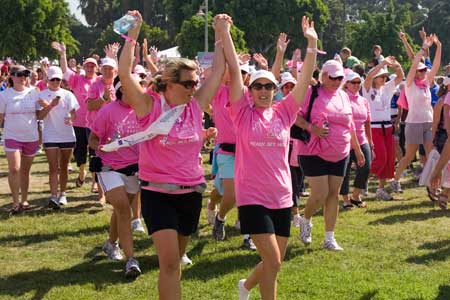Breast Cancer is one of the leading killers and leading forms of cancer. It affects 12% of women worldwide, and is one of the most prolific diseases in modern media. Without an understanding of how the disease works, it’s hard to fully process why the disease causes so much stress or has such a massive following around it, or the pink mania that surrounds it. These pink wristbands are part of a larger movement – learn more below!
WHAT IS BREAST CANCER?

Breast cancer is a form of cancer, obviously, that develops from the breast. Cancerous cells infect the breast area and spread throughout the body, eventually destroying the surrounding area and the patient’s life. This process initially starts slowly – the cell division required for the cancer to get to the point where a lump can be felt by hand can be between 2-5 years (though it can be detected early by a regular mammogram). However, once it gets to that point it will grow and grow to be very dangerous. Stages 1-3 are relatively restrained – kept to the breast and lymph node area and generally able to be contained and treated if it’s recognize in time. The fatty breast tissue that makes up the area will eventually succumb to the invasion of the cancerous cells which will warp and change the look of the breast. Due to this eventual decay, many procedures have been created to remove the cancerous area. These procedures have ranged from the superradical mastectomy (the removal of both breasts, the pectoral muscles, and latissimus dorsi muscles, which completely decimates the upper body of the patient) to those who opt for lumpectomies, which removes a small portion of the breast tissue to allow for easy reconstruction.
HISTORY

Breast cancer as a disease goes back as far as 2000 BC, and has been covered in one way or another throughout history. However, miniscule lifespans of old meant that most women simply didn’t make it to an age to develop breast cancer. The proposed causes ranged from divine punishment to imbalance of fluid in the body – these were all wrong, of course. In the 1700’s, credence was given to the cell-based theories put forward by Benjamin Rush, the U.S. surgeon general at the time. This led to the early procedures of mastectomies – eventually leading the popularization of the radical mastectomy (the removal of both breasts, the lymph nodes, and the chest muscles beneath). While these procedures remained standard for American surgeons, European doctors were searching for procedures that didn’t decimate the chest cavity – relying on radiation therapy more and more. Around the 1950s, chemotherapy (which causes the baldness associated with cancer survival) started to become much more popular, which made breast cancer a more solvable disease – no longer did women have to lose much of their chest area to simply survive the disease. In the 1970’s, people started to understand the way that metastasis (the way that cancer spreads from one area to the rest of the body) and through that created even more breast-sparing procedures. The 1980s saw the rise of bone-marrow injections (something that was shown to not actually increase survivability at all, but instead decreased it due to the treatment).
CULTURE

Breast cancer as the largest single form of cancer has led to a powerful culture surrounding the disease. Being able to suffer bravely and stay strong through the stressful process of having breast cancer is held up as admirable. It is a way for those who live through the disease to resolve the grief and anxiety sustained through a process such as cancer survivorship. Many of those who have beaten the disease talk about their positive experiences and treat it as somewhat of an inevitability in life. The group mentality of breast cancer is much larger than any other – foundations like the Susan G Komen Foundation and the National Breast Cancer Foundation rely heavily on building a coalition of those who have made it through chemotherapy. These multi-million-dollar corporations donate to breast cancer research with a portion of the profits made thru events like cancer walks and through selling pink-related merchandise. This merchandise includes the famous pink ribbons that are so linked to the survivors of breast cancer. Raising awareness for mammograms is a main goal of these foundations – while there is no true cure for cancer, having people get out there and test is very important for prevention.

source: healthyfellow.com
These pink wristbands are a subtle way to show support for those who have suffered through breast cancer and those who may not have survived. The solidarity that runs through the community is a motivation to those who are facing a difficult diagnosis.
Written by Michele Wheat